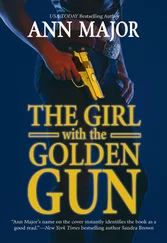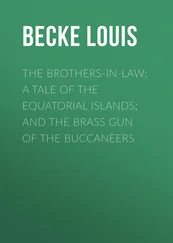That the nation needs a detailed, uniform code of firearms regulations ought to be, by now, beyond rational dispute. The fact is, many states have already passed firearms regulations far stricter than anything Congress has ever seriously debated. As of 1989, for example, twenty states already required that consumers first get some kind of license or purchase permit before acquiring a handgun; nineteen had a handgun waiting period ranging from forty-eight hours to up to six months.
The Second Amendment certainly poses no obstacle, despite the NRA’s rhetoric. As written in the Constitution, the full amendment reads: “A well-regulated militia, being necessary to the security of a free State, the right of the people to keep and bear arms shall not be infringed.” The amendment may indeed guarantee individuals the right to bear arms. Then again, it may not. At this point, only a definitive ruling by the U.S. Supreme Court can resolve the matter. I for one remain intrigued by the “well-regulated” portion, which the NRA omitted when it displayed the rest of the amendment on the front of its Washington, D.C., headquarters. One gun-camp scholar has gone so far as to suggest that “well-regulated” means equipped with rifles that shoot straight. In his book, The Samurai, the Mountie, and the Cowboy: Should America Adopt the Gun Controls of Other Democracies? David Kopel argues that “in firearms parlance ‘regulating’ a gun means adjusting it so that successive shots hit as close together as possible.” He writes that “‘regulated’ was an exhortation to competence, not an invitation to bureaucracy.” His conclusion, one he describes as “plausible,” is that a “well-regulated militia” meant “an effective citizen militia whose members hit their targets.” Kopel presents this notion three hundred pages into a detailed, heavily footnoted volume published by the Cato Institute that on first read may seem unbiased and almost scholarly. It is always important, however, to read anything on the gun debate carefully with an eye to capturing distortion and undisclosed bias. Kopel raises his true flag on page 152 where he cites research by “criminologist Paul Blackman.” Blackman may indeed be considered a criminologist in some circles, but he is also the NRA’s director of research. And Kopel, as I later found, is an NRA activist: and gun columnist. Nowhere, I might add, did the book divulge Kopel’s true identity.
I happen to side with established constitutional scholars who believe the document was designed to be applied at any time in the future with full relevance and authority to accommodate even such once-inconceivable developments as women’s suffrage and the abolition of slavery. I cannot help but wonder how James Madison would react upon reading a week’s worth of the Metro section of the New York Times , especially at year-end when the Times and most other big-city papers present their running tallies of the year’s homicides.
All the noise and dust generated by the debate over the true meaning of the Second Amendment obscures a fundamental question: Who cares? I recognize: that here I am inviting the NRA to do a little joyful editing and display this sentence in one of its ads or better yet in one of its emergency Minuteman mailings. (I say now, it’s okay, boys, you have my permission.) In fact, the Second Amendment does not, and never has, prohibited robust regulation of firearms, not even the NRA-conjured bogey, national registration of firearms.
Rather than viewing federal firearms regulation as the first step toward tyranny, as the NRA propagandists propose, we should see it as a means of ensuring that we can still enjoy the liberty we do have. We live now under the increasing restrictions of a particularly pernicious kind of tyranny that has sharply proscribed the contours of our lives. We do not go out at night without first considering the risks involved in doing so. Already many of us consider vast portions of America off-limits to us because of the potential for gun violence. We run red lights at lonely intersections. We choose our gas stations with care. We park as closely as possible to the entrances of our favorite malls. We avoid certain automated teller machines. When we pull up at our neighborhood 7-Eleven store, we look carefully through the display windows to see if the place is being held up. We do not intercede when we encounter an altercation among teenage boys because one or both may have a gun. We don’t dare yell at drivers who drive too fast through our neighborhoods. When our cars are hit from behind, we keep driving until we reach the nearest police station. In happier times this was called leaving the scene of an accident; now even my insurance company advises the practice.
Today when we send our kids off to school, we experience a brand-new kind of anxiety, the fear not that some bully will rough them up and steal their lunch money, but that they will be shot dead. What are we to advise our children today when they come home complaining of harassment by the school bully? Do we teach them how to fight, as Ward Cleaver might have taught “the Beave,” or do we buy them Kevlar vests and tell them to stay low? Should we buy our kids Raven pocket semiautomatics? A 1993 survey by Louis Harris found that four out of ten students said the fear of violence had sharply altered what they did with their free time and whom they picked to be their friends. These students lived in rural, suburban, and urban neighborhoods. Fifty-five percent said they wished their schools had metal detectors. In a related survey, Harris found that 59 percent of adults saw the dangers from guns as “serious” as or “more serious” than car crashes. Even the NRA’s rank and file seem troubled. Thirty-four percent of the NRA members captured in Harris’s survey agreed “young people’s safety is endangered by there being so many guns around these days.”
I read with rueful delight a 1993 cartoon by Mike Luckovich of the Atlanta Constitution , which showed an Arab terrorist squad in a bomb-packed car receiving some last-minute advice before heading for America. “Remember, carry a map. If you get lost, you may end up in a bad neighborhood. If someone rear-ends you, don’t get out. They may be armed carjackers. Keep your doors locked….”
In 1975, a congressional subcommittee asked the NRA’s Harlon Carter if he felt it was preferable to allow felons, drug addicts, and the mentally ill to acquire guns, rather than to establish a means of checking the backgrounds of all buyers. Yes, Carter responded, it was “a price we pay for freedom.”
We are advised today by the NRA and the likes of Paxton Quigley not to fight like the devil to free ourselves from the new tyranny of the gun, but to arm ourselves. The more guns the better. To anyone raised in the Vietnam War era, surely, this position has a disconcertingly familiar ring. For what is the NRA doing but reshaping that sad old maxim “We must destroy the village in order to save it.”
We must endure tyranny—the new tyranny of the gun with its concomitant loss of dignity, honor, and compassion—in order to avoid tyranny.
I propose a five-part omnibus law that will use the word ban only once—yes, I apologize, I betray a rather antiquated bias here: I do happen to believe that silencers should be outlawed, even those registered by police and law-enforcement agencies. However hard I try, I simply cannot foresee a practical use for silencers that would conform to our society’s belief in due process and the rule of law.
If enacted in its entirety, with none of the almost-criminal loopholes that have marred existing laws, I guarantee my proposed regulations, which I like to think of as the “Life and Liberty Preservation Act,” would sharply impede the flow of guns to kids, felons, and irresponsible shooters, with no significant impact on those upright citizens who keep guns for self-defense, for plinking, or for hunting. If anything, today’s patchwork of laws has made things far more difficult for the legitimate shooters, something the shooters tend to blame on gun-control advocates, the media, and other “gun grabbers.” In fact, the blame belongs with the NRA itself, which bears so much responsibility for the disarray in firearms regulation that exists today.
Читать дальше
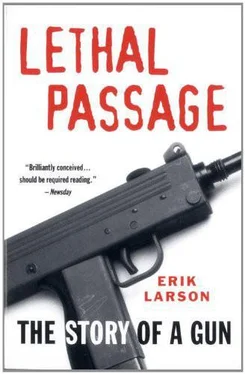
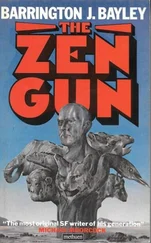
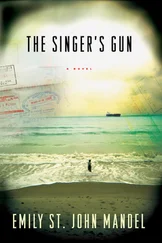

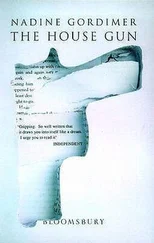

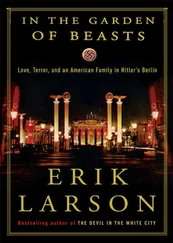

![Ричард Деминг - Whistle Past the Graveyard [= Give the Girl a Gun]](/books/412176/richard-deming-whistle-past-the-graveyard-give-t-thumb.webp)
